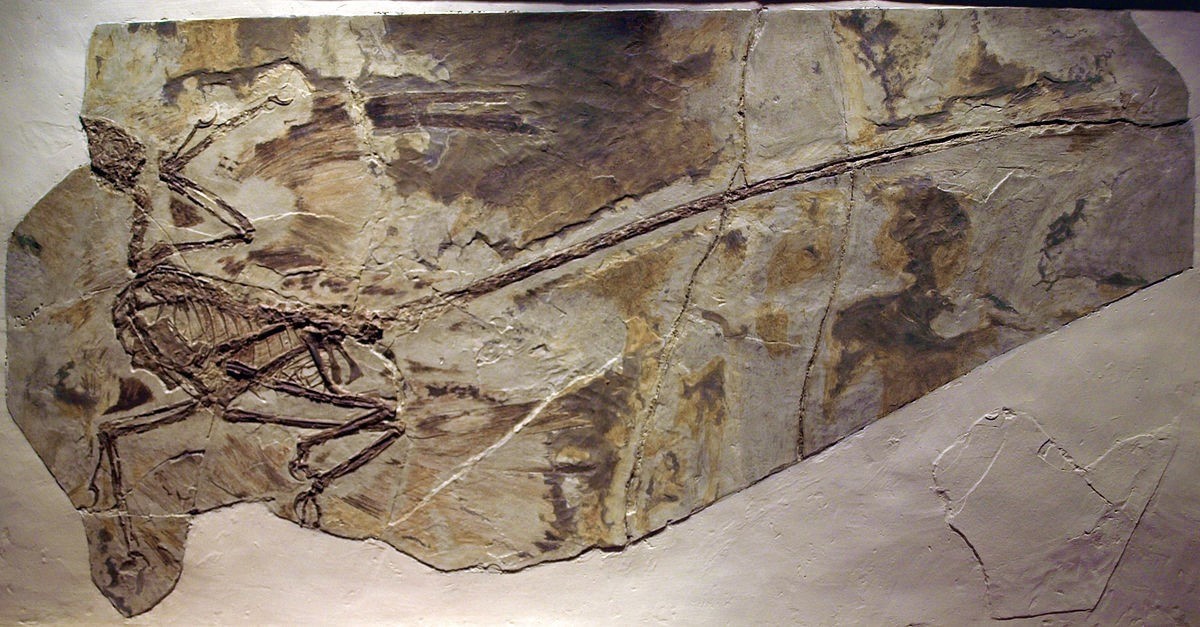You can watch the program from the NOVA page "The Four-Winged Dinosaur," and/or watch the preview for the program here.
 Click to enlarge fossil image.
Click to enlarge fossil image.Why mention this little PBS show? Simply to point out a nice little glimpse of how science works in practice. The story line in this case is a pretty good example of how (what some would call "interdisciplinary") science works, and highlights the importance of having a working relationship between experts in different scientific disciplines.
For scientists, a recognition of this way of doing science can shape what we read, what conferences we go to, and the sorts of discussions we have with other scientists outside our area of expertise. More generally, this style of science typifies the notion that science is a community endeavor, which has implications for the way science is taught to future scientists and to the general public.
Another reason for sharing the program is to illustrate the pace at which science often progresses - it's an incremental process and often a lot slower than people think! Progress does occasionally happen larger steps, and these can sometimes be driven by (1) new empirical data or methods of data collection that result in new questions (how did this dinosaur use 4 wings!?) and (2) new ways of thinking about these questions and the tools those new ways of thinking bring to bear on trying to answer those questions.
Julia Clarke points out the role the microraptor work has played in this process towards the end of the program: "Microraptor has thrown our understanding into a new and productive chaos. It doesn't solve the problem, it doesn't give us an answer, but it gives us another way of thinking about the data, and I think eventually, we are going to get to some answers."
So where do those new tools and new ideas come from? Some sort of scientific genius or amazing luck? Well, sure, probably sometimes - but for your average scientist, the best place to start looking for those new insights can often come from "down the hall" - if done right, it can be very fruitful for some researchers to venture out of their own area of expertise, and to team up with experts in other fields on relevant problems. In the case of microraptor, questions about flight brought together expertise from paleontology, comparative vertebrate anatomy, ornithology, aerodynamics, and other disciplines and together these scientists have incrementally advanced our understanding of the origin of flight in birds and reptiles.
In wrapping up this post, I should mention the idea of "interdisciplinary science," the value of which is well illustrated by the very interdisciplinary team of researchers in this program. Scientists, technology experts and in this case artists coming together to try and answer a basic scientific question that demanded more than any one area of expertise to try and answer.
In practice, however, there are often significant challenges present in bringing together such a diverse group of "experts". These challenges include things like the problem of field-specific and/or conflicting terminology, and a great many other challenges that can hinder the development of a productive meeting of minds on a given project.
I'll keep myself from running off on this tangent, but if you're interested a little digging on the web should turn up some of those challenges to doing "interdisciplinary science" plus ways to avoid and deal with them (feel free to comment below if you find anything worth sharing!)





0 comments:
Post a Comment